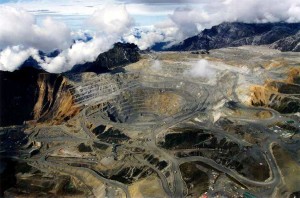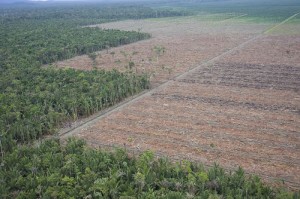West Papua within Indonesia[edit]
From the first days of Indonesian occupation, the people of West Papua refused to be part of Indonesia and the vast majority of them have pushed for independence ever since. There are regular mass protests throughout West Papua in support of independence but the Indonesian military and police often use lethal force to disperse them. The Free Papua Movement (OPM) was set up to provide a formal resistance towards Indonesian rule. Local and international protest followed the impact of human rights abuses and transmigration by other Indonesians into the region.[18] Since the 1960s, consistent reports have filtered out of the territory of government suppression and terrorism, including murder, political assassination, imprisonment, torture, and aerial bombardments. The Indonesian government disbanded the New Guinea Council and forbade the use of the West Papua flag or the singing of the national anthem. There has been resistance to Indonesian integration and occupation, both through civil disobedience (such as Morning Star flag raising ceremonies) and via the formation of the Organisasi Papua Merdeka (OPM, or Free Papua Movement) in 1965. Estimates vary on the total death toll of West Papuans by the Indonesian military with wild variation in the number claimed dead. In almost all estimates, under International law the death toll amounts to genocide of the people of West Papua by Indonesia. A Sydney University academic has estimated more than 100,000 Papuans, one sixteenth of the population, have died as a result of government-sponsored violence against West Papuans,[19] while others had previously specified much higher death tolls.[20] An increasingly common figure being used is 500,000 people.
In the 1970s and 1980s, the Indonesian state accelerated its transmigration program, under which tens of thousands of Javanese and Sumatran migrants were resettled to Papua. Prior to Indonesian rule, the non-indigenous Asian population was estimated at 16,600; while the Papuan population were a mix of Roman Catholics, Protestants andanimists following tribal religions.[21] The transmigration program officially ended in the late 1990s. An independence congress in 2000 again calling for independence resulted in a military crackdown on independence supporters.
During the Abdurrahman Wahid administration in 2000, Papua gained a "Special Autonomy" status, an attempted political compromise between Papuans and the central government that has weak support within the Jakarta government. Despite lack of political will of politicians in Jakarta to proceed with real implementation of the Special Autonomy, which is stipulated by law, the region was divided into two provinces: the province of Papua and the province of West Papua, based on a Presidential Instruction in January 2001, soon after President Wahid was impeached by the Parliament and replaced by Vice President Megawati Sukarnoputri. However, most Papuans refuse any promises of autonomy from Indonesia as they are instead demanding independence, and a free referendum for all Papuans to determine whether they choose independence or not.

